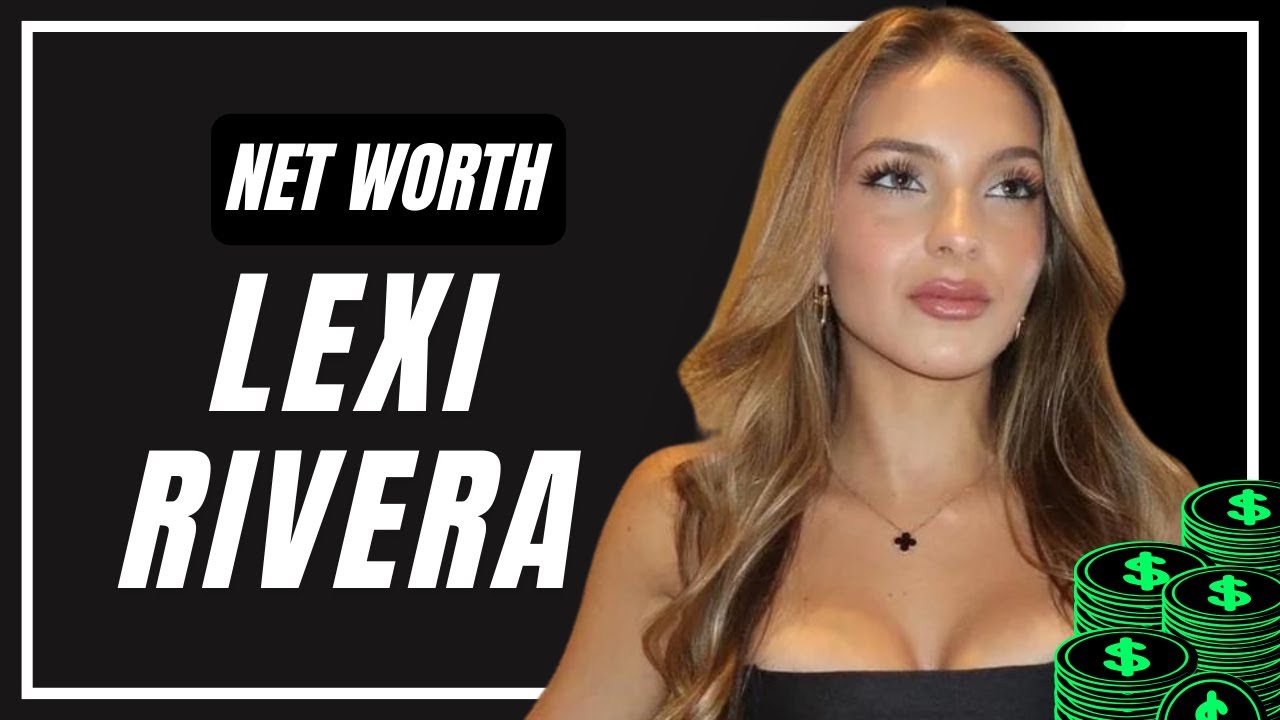From Creator to Entrepreneur: Lexi Riveras Business Lines and Net Worth — an Economic Profile
This article examines Lexi Rivera as an economic actor: how a social media creator has transformed attention into multiple revenue-generating lines, and how analysts construct estimates of her net worth. Variations on the theme — such as From creator to entrepreneur: Lexi Rivera’s revenue streams and estimated wealth, and From Creator to Entrepreneur: Lexi Rivera’s Business Lines and Financial Footprint — emphasize both the personal brand transition and the monetization architecture common to mid-tier celebrity entrepreneurs.
Transitioning from Social Media Star to Business Owner
Lexi Rivera rose to prominence through short-form video platforms and social networks. Over time, she has leveraged audience scale, brand identity, and cross-platform reach to create distinct business lines. This is a typical path from creator to entrepreneur, where the content creator becomes a manager of commercial relationships, physical product lines, and intellectual property.
Key elements in the transition include:
- Monetizable attention: turning views and engagement into payable impressions and sponsorship value.
- Brand extensions: merchandising, collaborations, and licensed products.
- Platform diversification: reducing risk by operating across YouTube, TikTok, Instagram, and other channels.
- Human capital: the creator’s personality, reputation, and relatability as a scarce asset.
Business model archetype
Lexi’s model conforms to a multi-sided creator economy structure: producing content for audiences, monetizing via ad networks and platform splits, and commercializing audience trust through sponsorships and products. The economic valuation of such a model depends on engagement rates, audience demographics, and contractual terms with partners.
Primary Business Lines and Revenue Streams
Below are the principal business lines typically associated with creators of Lexi Rivera’s profile, each accompanied by the associated economic dynamics.
YouTube Ad Revenue and Platform Split
- Revenue mechanics: CPM/CPV (cost per thousand impressions / cost per view) payments via YouTube Partner Program.
- Economic drivers: watch time, ad inventory, geographic audience mix (U.S. and Western European viewers command higher CPMs).
TikTok and Short-Form Platform Monetization
- Revenue mechanics: creator funds, brand deals, live gifting, and platform bonuses.
- Economic drivers: virality, frequent posting cadence, and algorithmic amplification.
Sponsorships, Endorsements, and Affiliate Partnerships
- Sponsorship mechanics: per-post flat fees, campaign-based retainers, and affiliate revenue shares.
- Price drivers: follower size, audience alignment with brand, historical campaign performance.
Merchandise and Direct-to-Consumer (D2C) Sales
- Economics: gross margin depends on production costs, fulfillment, and marketing; D2C retains most margin but requires upfront working capital.
- Scaling: limited by product-market fit and repeat purchase rates.
Appearances, Licensing, and Traditional Media
- Ancillary revenue: paid appearances, acting roles, and licensed collaborations.
- Value: often episodic but can carry high per-event compensation.
Estimating Net Worth: Methodology and Illustrative Model
Estimating an individuals net worth when most assets and liabilities are private requires a transparent methodology. Below is a conservative, reproducible approach used in industry analyses for creators-turned-entrepreneurs.
Methodological building blocks
- Revenue projection: model annual income from each business line based on industry benchmarks (CPM, sponsorship rates, merch margin).
- Expense estimation: subtract operating costs (team, production, fulfillment, legal, taxes)—often 30–60% of gross for creators with staff and product lines.
- Asset estimation: add cash, investments, and business equity where publicly indicated or reasonably inferred.
- Liabilities: estimate debt if disclosed or use default conservative assumptions (e.g., mortgages, business loans).
- Confidence intervals: present a range rather than a single point estimate to reflect information asymmetry.
Illustrative annual revenue model (hypothetical)
The following table is a modeled example for a mid-to-upper-tier creator who has diversified across ad revenue, sponsorships, and merchandise. These are illustrative figures based on common market rates; they are not assertions of documented earnings.
| Revenue Stream | Annual Revenue (USD) — Model | Assumptions |
|---|---|---|
| YouTube ad revenue | $150,000 | Average CPM $2–$4; steady uploads; regionally mixed audience |
| TikTok + Instagram monetization | $80,000 | Creator funds + live gifts + small platform incentives |
| Sponsorships & brand deals | $300,000 | Several mid-sized brand campaigns annually; per-post rates vary by deliverables |
| Merchandise / D2C | $120,000 | Gross sales $250k; 48% gross margin after COGS |
| Appearances / licensing | $50,000 | Occasional paid appearances and small licensing deals |
| Total modeled annual revenue | $700,000 | Aggregate across lines |
Note: These figures are model outputs for illustrative purposes. Actual revenue can be materially higher or lower depending on contract terms, undisclosed investments, and capital events.
From Annual Revenue to Net Worth: Translating Income into Wealth
Net worth is an accumulation metric: it depends on how income is allocated across consumption, taxes, reinvestment, savings, and asset acquisition. For creators who monetize heavily, common wealth-building activities include:
- Reinvesting in business: hiring managers, producers, and expanding product lines.
- Allocating to financial assets: equities, real estate, retirement accounts.
- One-off capital events: equity sales of a brand, big licensing deals, or exits can spike net worth.
Hypothetical net worth range based on modeled cashflows
Using the illustrative annual revenue above and assuming a multi-year horizon with moderate reinvestment and conservative spending patterns, one can produce a range estimate. The following table shows a simplified worked example.
| Scenario | Assumed Annual Net Income (post-expenses & tax) | 5-Year Accumulation (no major asset sales) | Estimated Net Worth Range |
|---|---|---|---|
| Conservative | $200,000 | $1,000,000 | $800,000 — $1.5M |
| Base case (modeled) | $420,000 | $2,100,000 | $1.5M — $3.0M |
| Upside (higher sponsorships & exits) | $800,000+ | $4,000,000+ | $3.0M — $6.0M+ |
These ranges are not precise valuations but demonstrate why public estimators often report a range for creator net worth rather than a single figure.
Economic Data and Benchmarks Useful for Valuation
When analysts value creators like Lexi Rivera, they rely on several industry benchmarks and data points:
- CPM benchmarks: $1–$10 for long-form video depending on geography and niche; higher for lifestyle and beauty verticals in premium markets.
- Sponsorship rates: micro-influencers ($500–$5,000 per post), mid-tier influencers ($5,000–$50,000), top-tier ($50k+); deals can be flat-fee or performance-based.
- Affiliate conversion rates: typically 1–5% of clicks; commission rates vary 5–30% depending on product category.
- Merch margins: variable; D2C gross margins often 40–60% before marketing.
Market Positioning and Strategic Choices
A creator’s long-term economic value depends on strategic choices beyond raw follower counts:
- Brand alignment: working with brands that enhance long-term reputation increases lifetime value.
- Product diversification: physical goods, digital products, and intellectual property reduce reliance on ad markets.
- Corporate structuring: building formal entities (LLCs, corporations) and bringing in partners can improve tax efficiency and enable capital-raising.
Risks to income stability
- Platform policy changes: algorithm shifts or demonetization can sharply reduce ad income.
- Reputational risk: public controversies can depress sponsorship demand.
- Market saturation: increased competition for attention can depress CPM and sponsorship rates.
Comparative Context: Peers and Industry Benchmarks for Creator Wealth
Placing Lexi Rivera within a comparative group of creators helps interpret any net worth estimate. Peers who have successfully turned social followings into diversified businesses often show the following traits:
- Multiple scalable revenue streams (ads + products + licensing).
- Professionalized operations with managers, agents, and in-house teams.
- Occasional capital events such as investments, brand exits, or equity partnerships that accelerate wealth accumulation.
Benchmarks from public filings or industry reports show that creators who transition successfully may convert an annual revenue base of several hundred thousand dollars into multimillion-dollar net worths over the medium term, depending on reinvestment and leverage.
Disclosure on Estimates and Data Sources
Because private financial details are not publicly disclosed in full, estimates in this article are constructed from a combination of: public-facing monetization mechanisms, typical industry rates, and a hypothetical revenue model intended for illustration. These are not definitive values for Lexi Rivera but rather an economic framework for understanding how a creator can become an entrepreneur and build net worth. For rigor, analysts would complement this approach with contract data, tax filings, and verified business financials when such documents are accessible.
The next sections will drill down further into specific monetization mechanics and provide scenario modeling for growth and downside outcomes, with sensitivity analysis to CPM, sponsorship pricing, and merchandise margin changes, as well as an expanded table of projected cash flows over a 10-year horizon.



